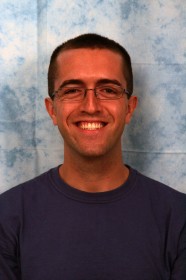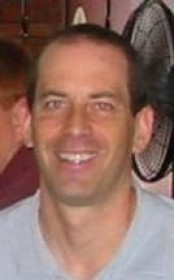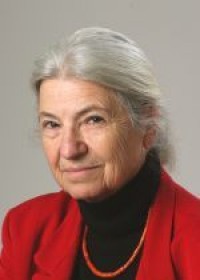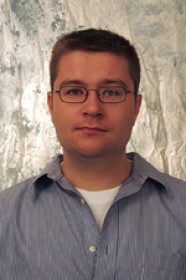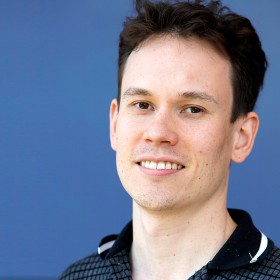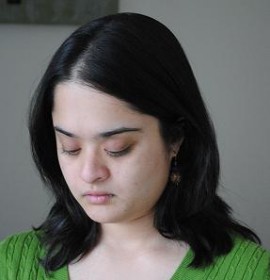Seminar
Capturing Light: The History of Imaging
Event Location: NSH 1305Bio: Roger Cicala received his M. D. in 1986. He spent 12 years (not all in a row) as Associate Professor of Medicine at the University of Tennessee. In the interim he practiced medicine, worked in pharmaceutical research, and for the Drug Enforcement Agency. In 2005 he left medicine to make a [...]
Complementary Flyover and Rover Sensing for Modeling of Planetary Features
Event Location: GHC2109Bio: Heather Jones is a PhD student at the Robotics Institute. Before coming to Carnegie Mellon, she earned bachelors degrees in engineering and computer science from Swarthmore College and worked for nearly three years at NASA's Johnson Space Center. Abstract: This talk presents complementary flyover and surface exploration for reconnaissance of planetary point [...]
State Estimation from Visual-Inertial Data in Unstructured Environments
Event Location: GHC2109Bio: Andrew Chambers is a Masters student at the Robotics Institute, advised by Sanjiv Singh. He holds a B.S. in Electrical Engineering from the University of Southern California. Before coming to the RI, he worked as an electrical engineer at iRobot in Boston, MA, where he designed hardware for the bomb disposal robots.Abstract: [...]
Shape, Albedo, and Illumination from Shading
Bio: Jon Barron is 4th year PhD candidate at UC Berkeley, supervised by Jitendra Malik. He is currently a visiting student with MIT's vision group. His research concerns intrinsic images, shape reconstruction, and biomedical imaging. Abstract: Traditional methods for recovering scene properties such as shape, albedo, or illumination rely on multiple observations of the same [...]
The Journey from Algorithm to Product
Event Location: NSH 1305Bio: Dr. Henry Schneiderman co-founded and served as CEO of Pittsburgh Pattern Recognition (PittPatt), a face recognition technology company spun off from Carnegie Mellon in 2004 and acquired by Google in 2011. At Google, he is involved in a variety of computer vision related products and services. In particular, he has helped [...]
Active Perception and What Comes After
Event Location: NSH 1305Bio: Dr. Ruzena Bajcsy (“buy chee”) was appointed Director of CITRIS and professor of EECS department at the University of California, Berkeley on November 1, 2001. Prior to coming to Berkeley, she was Assistant Director of the Computer Information Science and Engineering Directorate (CISE) between December 1, 1998 and September 1, 2001. [...]
A Fixation-based Segmentation Framework to Extract Simple Objects from a Scene
Event Location: NSH 1305Bio: Ajay Mishra is currently working as a Research Scientist at Intelligent Automation Inc, Rockville, Maryland. Prior to this, he was a post-doc/Visiting Researcher working with Prof. Yiannis Aloimonos at the Institute for Advanced Computer Studies, University of Maryland, College Park since 2007. He obtained his PhD (2011) and B.Tech (2003) degrees, [...]
Simulating global motion detection in Macaque visual cortex and it’s application to optical flow
Event Location: GHC2109Bio: Michael Furlong is a Ph.D candidate in the Field Robotics Center working on science autonomy.Abstract: Pattern cells in area V5/MT represent an intriguing step in the visual hierarchy, whereby neurons become sensitive to global motion, rather than simply to the motion of constituent components, cells in the primary visual cortex (V1). A [...]
RatSLAM: Using Models of Rodent Hippocampus for Robot Navigation
Event Location: GHC2109Bio: I hold a PhD in Electrical Engineering and a Bachelor of Engineering from the University of Queensland, awarded in 2006 and 2002 respectively. I recently joined the Queensland University of Technology as Lecturer, having previously worked as a Postdoctoral Research Fellow at QUT and before that for three years as a Research [...]
Advancing Computer Vision by Leveraging Humans
Event Location: NSH 1305Abstract: Historically, humans have played a limited role in advancing the challenging problem of computer vision: either by designing algorithms in their capacity as researchers or by acting as ground-truth generating minions. This seems rather counter-productive since we often aim to replicate human performance (e.g. in semantic image understanding) and are faced [...]


